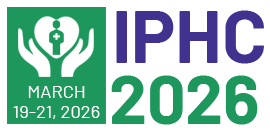Soil Contamination Research
Soil contamination is a pressing environmental issue with far-reaching consequences for ecosystems and human health. This phenomenon occurs when harmful substances, such as heavy metals, pesticides, and industrial chemicals, infiltrate and accumulate in the soil, disrupting its natural composition. The sources of soil contamination are diverse, ranging from industrial activities and improper waste disposal to agricultural practices that involve the use of chemical fertilizers and pesticides. As these contaminants persist in the soil, they can have detrimental effects on plant and microbial life, disrupt nutrient cycles, and eventually find their way into the food chain, posing risks to human health. The impact of soil contamination on the environment is multifaceted, affecting biodiversity, water quality, and overall ecosystem health. Contaminants leach into groundwater, contaminating water sources and potentially leading to the bioaccumulation of toxins in aquatic organisms. Soil contaminated with heavy metals, for instance, can have long-lasting effects on plant growth and impair the reproductive capabilities of various species. Furthermore, the degradation of soil quality can contribute to land degradation, reducing its ability to support vegetation and leaving it vulnerable to erosion. The consequences of soil contamination are interconnected, creating a cascade effect that can exacerbate environmental degradation. Addressing soil contamination requires a comprehensive approach that combines scientific research, regulatory measures, and sustainable land management practices. Efforts to remediate contaminated sites often involve the use of innovative technologies such as phytoremediation, where certain plants are utilized to absorb and accumulate contaminants, facilitating their removal from the soil. Additionally, raising awareness about responsible waste disposal, promoting organic farming practices, and implementing stringent environmental regulations are crucial steps toward preventing further soil contamination. By understanding the complexities of soil contamination and adopting proactive measures, society can work towards preserving the health and integrity of the environment for current and future generations.

Kenneth R Pelletier
University of California, United States
Gregory S Anderson
Thompson Rivers University, Canada
Yazdan Mirzanejad
University of British Columbia, Canada
Hawa Camara
National Cancer Institute, United States
Rafaela Julia Batista Veronezi
Physiotherapist, Neuroscientist & Public Health Educator, United States
Amelia Burke Garcia
NORC at the University of Chicago, United States



Title : The impact of AI on the future of public health and preventative healthcare
David John Wortley, World Lifestyle Medicine Education Services, United Kingdom
Title : Personalized and Precision Medicine (PPM) as a unique healthcare model to secure the human healthcare, wellness and biosafety through the view of public health, network-driven healthcare services and lifestyle management
Sergey Suchkov, 1N.D. Zelinskii Institute for Organic Chemistry of the Russian Academy of Sciences, Moscow, Russia, Russian Federation
Title : Psychoeducation programs to address post-traumatic stress injuries and mental health in public safety and frontline health care workers
Gregory S Anderson, Thompson Rivers University, Canada
Title : Managing integration and interoperability of intelligent and ethical transformed health and social care ecosystems
Habil Bernd Blobel, University of Regensburg, Germany
Title : Scientific evaluate quantification of social and behavioral by scalp acupuncture on children with autism spectrum disorder
Zhenhuan Liu, University of Chinese Medicine, China
Title : Environmental Public Health Impact Assessment (EHIA) process for tobacco processing plants
Vijayan Gurumurthy Iyer, Techno-Economic- Environmental Study and Check Consultancy Services, India